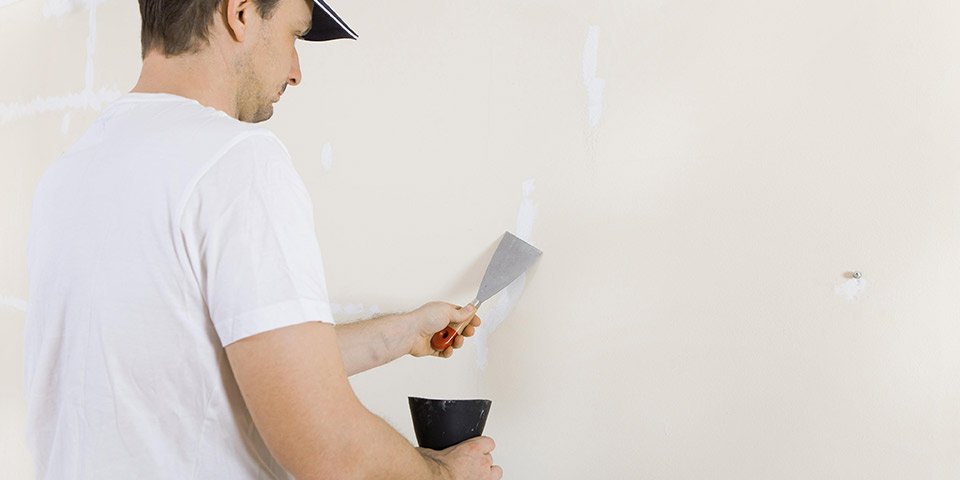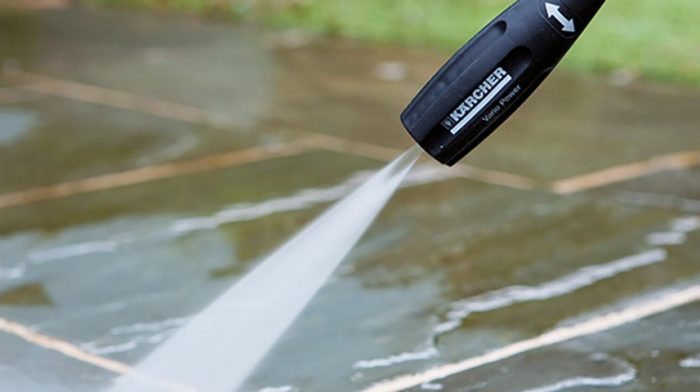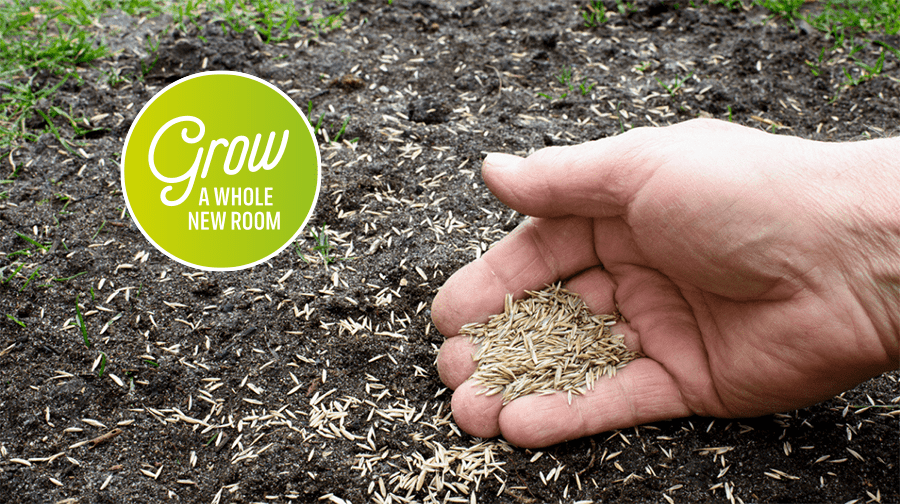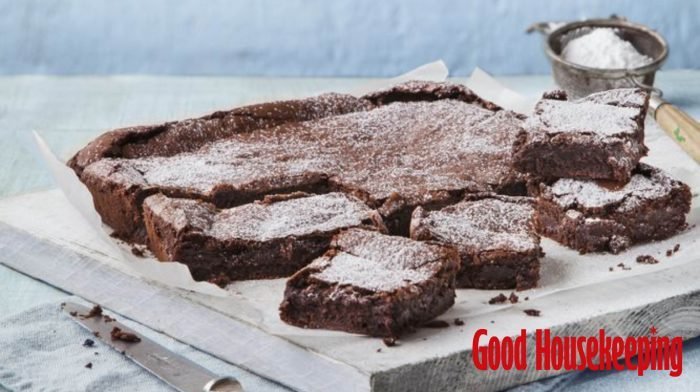If your morning shower is no longer as refreshing as it was – thanks to a less-than-powerful flow of water – or you find that the spray is going off at random angles, you might need to take a closer look at your shower head. Sometimes these issues are due to a drop in water pressure, but more often than not, it’s down to a build-up of limescale in your shower head. But before you dash out to order a new one, take a look at our guide to how to get your shower head clean again.
What you’ll need:
- Spanner
- White vinegar
- Plastic container or strong plastic bag
- Small scrubbing brush or old toothbrush
- Cable ties or elastic bands (for fixed shower heads)
- Soft microfibre cloth
What is limescale?
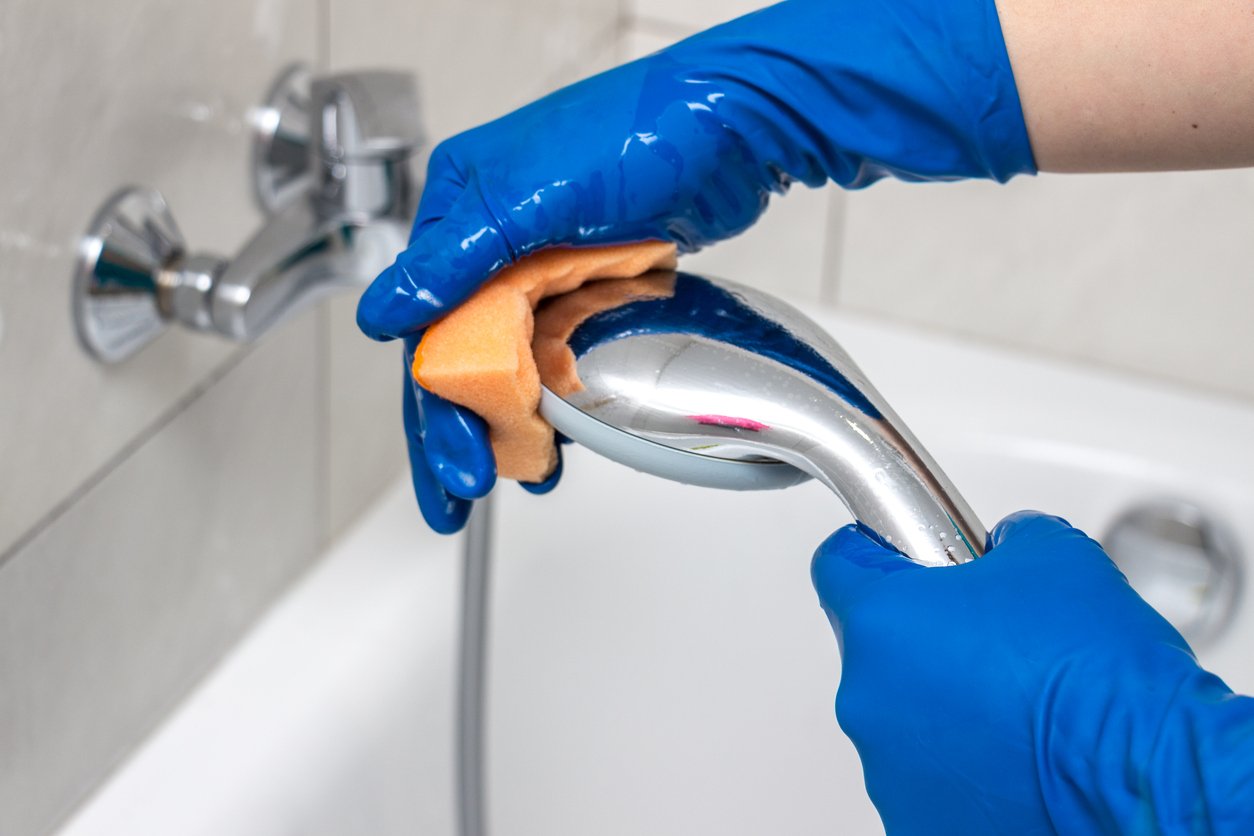
Those chalky, white deposits that you can’t just wipe off your shower screen, around your taps and on your shower head are limescale. Limescale is made up of calcium and magnesium deposits that are left behind when water evaporates – particularly if you live in an area with hard water.
What does limescale on my shower head look like?
You can often spot traces of white limescale on the surface of your shower head – you might even be able to see it blocking the ducts. But even if the limescale isn’t visible, if your shower spray is less effective than it used to be, it’s a safe bet that it’s lurking behind the scenes. The good news is that it’s harmless. But as well as reducing flow or blocking ducts, it doesn’t look great. It can leave your once sparkling bathroom looking a little dull.
Can I remove limescale from my shower head myself?
Limescale can be removed – fairly quickly, easily and without a huge investment in cleaning equipment. Removing limescale is known as ‘descaling’ – and white vinegar (not the malt vinegar you put on your chips!) is the most effective solution. So, the good news is that you can avoid planet-harming chemicals, too.
Top tip: Before you get started, check whether your shower head is removable (this will usually be the hand-held style of shower) or fixed to the wall or ceiling. Both can be cleaned at home but you’ll need slightly different equipment to get the job done.
How to descale a shower head that is removable or hand-held:
Step 1: Off with its head
First of all, remove the offending shower head. These often unscrew quite easily, but if it’s cemented on with limescale, you may need a spanner to persuade it. Once it’s off, put the rubber washer safely to one side, you’ll need this when you put it back together again.
Top tip: To avoid scratching or damaging your shower head if you need to use tools to remove it, wrap it in a cloth to protect the finish.
Step 2: Put it in a container
Place the shower head in a plastic tub and pour white vinegar over it until it’s submerged. The acid in the vinegar will react with the limescale to break it down. Leave it in there for at least half an hour.
Step 3: Rinse it off
Once your shower head has been in its vinegar bath for around 30 minutes, give it a good rinse. You should see bits of limescale washing off – but make sure you run water through the head to dislodge any stubborn build up.
Step 4: Scrub it
Next, use an old toothbrush to scrub the individual ducts to make sure that any stubborn limescale is removed. These should have been loosened by the white vinegar, and you may see them being washed away.
Top tip: If you’re looking to find out how to clean a shower head most effectively, an old toothbrush is the best tool for the job but if you don’t have one, try an anti-scratch scourer or old nail brush.
Step 5: Good, clean fun
Finally, take a soft cloth and polish the shower head to remove any streaks. Reattach it (complete with washer!) and run the shower for at least 30 seconds to flush out any remaining limescale and vinegar.
How to clean a shower head that is mounted to the wall or ceiling:
Step 1: Check your shower head
You may find that your wall or ceiling mounted shower head has a mechanism so you can release it for cleaning purposes. But if not, don’t panic, we have a suggestion.
Step 2: Bag it!
Get hold of a strong plastic bag that’s big enough to fit over your shower head and add to it enough white vinegar to cover your shower head. Wrap the bag around the shower head until it’s submerged and fasten it securely at the top. Leave it for around half an hour to do its magic.
Top tip: To hold the bag in place you can use anything from elastic bands and hair bobbles to cable ties and tape. Make sure they don’t damage the shower head, though.
Step 3: Get scrubbing
As above, once your shower head has had a good soak, use an old toothbrush to remove the limescale, and polish it with a soft cloth.
Step 4: Run the shower
Switch the shower on for at least 30 seconds to flush out any remaining limescale and vinegar before you hop under it yourself.
How do I keep my shower head clean for the future?
This is a job that’s worth doing every few months, to keep on top of it. It’s also a good idea to wipe your shower head with a dry cloth after every shower, this will help prevent limescale from building up as quickly.
What if vinegar doesn’t get the water flowing again?

White vinegar is generally very effective at descaling – and in most cases, your shower head will be as good as new once you’ve put it through its paces. If you’ve left the job too long, it might not be quite strong enough – so you could try a specialist cleaner from a supermarket.
However, if yours is beyond help, it may be that you need to invest in a new shower head. From an ultra-stylish overhead rainfall shower head to a hand-held shower attachment, there are plenty to choose from, in a style that completes your bathroom.

